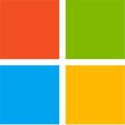
0patch Offers Additional Windows 10 Security Updates, Extending Usage Until 2030
0patch plans to combat Microsoft's ending Windows 10 support by offering unofficial security updates for the 2015 operating system. Microsoft is ending Windows 10 security updates on October 14, 2025, after which the OS will stop receiving patches for vulnerabilities. The Redmond giant will provide you with an option to update your Windows 10 build, however, with a hefty fee slapped. Extended Security Updates (ESU) pricing structure follows a tiered model that doubles each year. From October 2025 to October 2026, the cost is $61 per device. The following year, from October 2026 to October 2027, the price increases to $122 per device. In the final year, spanning October 2027 to October 2028, the cost rises to $244 per device. For users planning to maintain Windows 10 until October 2028, the total expense over the three-year period would amount to $427 per device.
However, 0patch, a company focused on providing unofficial security updates for Windows OSes, will provide Windows 10 users with free and paid security updates post-end of service. Their system focuses on delivering targeted "micropatches" for critical vulnerabilities that emerge after Microsoft's official support ends. These micropatches are designed to be extremely precise and minimal, often consisting of just a few CPU instructions. A key feature of 0patch's approach is its non-invasive nature. The patches are applied directly to running processes in the computer's memory, leaving the original Microsoft files untouched. This method allows for rapid deployment of security fixes without requiring system reboots or interrupting user activities. The patching process is designed to be seamless and virtually unnoticeable to users. For instance, a user working on a document wouldn't experience any disruption while a micropatch is being applied. This approach is particularly beneficial for servers, where continuous uptime is crucial, as patches can be implemented without any downtime.
However, 0patch, a company focused on providing unofficial security updates for Windows OSes, will provide Windows 10 users with free and paid security updates post-end of service. Their system focuses on delivering targeted "micropatches" for critical vulnerabilities that emerge after Microsoft's official support ends. These micropatches are designed to be extremely precise and minimal, often consisting of just a few CPU instructions. A key feature of 0patch's approach is its non-invasive nature. The patches are applied directly to running processes in the computer's memory, leaving the original Microsoft files untouched. This method allows for rapid deployment of security fixes without requiring system reboots or interrupting user activities. The patching process is designed to be seamless and virtually unnoticeable to users. For instance, a user working on a document wouldn't experience any disruption while a micropatch is being applied. This approach is particularly beneficial for servers, where continuous uptime is crucial, as patches can be implemented without any downtime.


































































